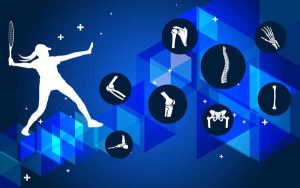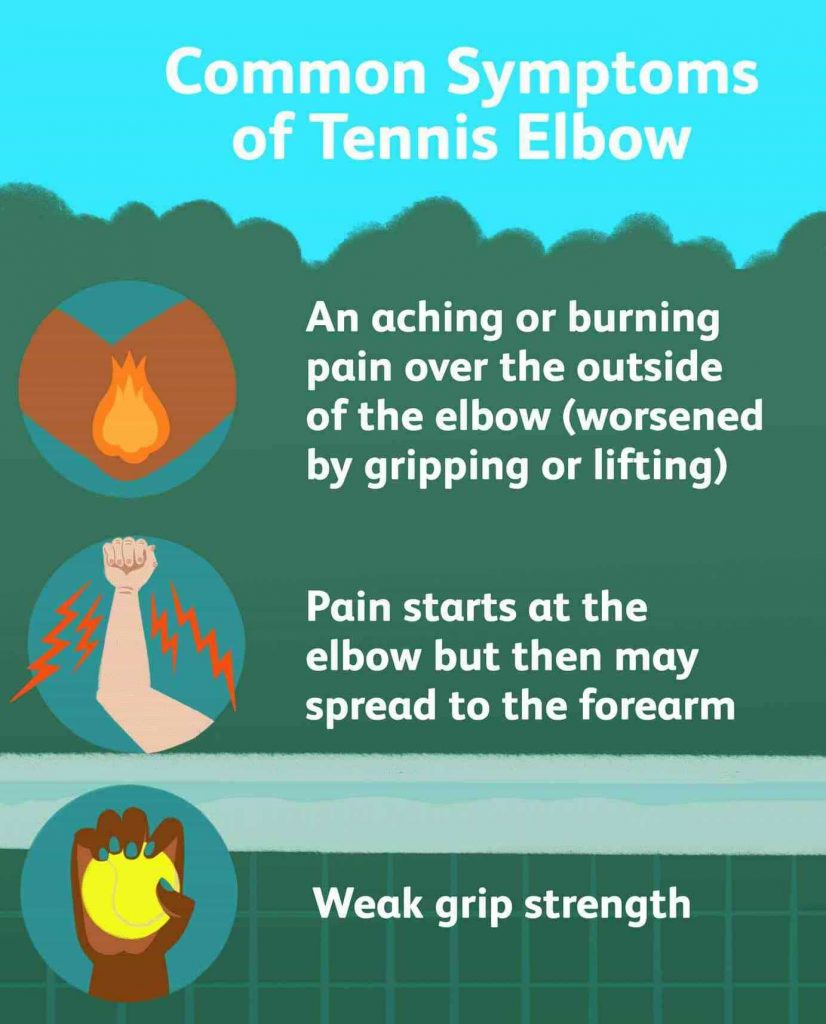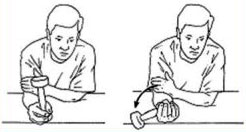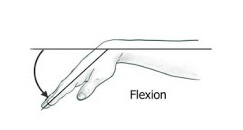Tennis Elbow Symptoms & Treatment [Surgical or Non-Surgical]


Lateral epicondylitis, which is more commonly known as Tennis Elbow is a painful condition which is characterized by intense pain in the forearm and wrist. Overuse of the arm and wrist muscles during playing tennis is the main cause of painful tennis elbow condition.
Athletes are not the only people who develop tennis elbow, rather people whose job features excessive hand motion may suffer from this condition. Such as painters, plumbers, carpenters, and butchers.
The tennis elbow is basically the micro-tearing of the tendons that join the forearm muscles to the tendon. Due to overuse, forearm muscles and tendons become damaged leading to pain and tenderness on the outside of the elbow.
Best Tennis Racquets for Tennis Elbow Reviews & Buying Guide
Tennis elbow is a treatable condition that can be easily treated along with proper rest and following simple exercise along with home remedies. In severe cases, a proper team approach will be required as a treatment protocol which includes, doctor, physician, and surgeon in most cases.
The major ratio of tennis elbow patients in tennis are newbies because beginners (Boys and Girls) swing tennis racquet recklessly and try to learn all tennis game as fast as they can, this attitude cause damages their health.
As a suggestion seniors and females should go for soft tennis than move to normal tennis. More related and helpful material is linked below.
Hiring Coach or joining tennis training is important so won’t waste your time by practicing alone with wall or by tennis ball machine.
This article will give all relevant information about tennis elbow, its causes, diagnosis, and treatment that will help to relieve pain.
What Cause Tennis Elbow?

Before diving into the list of causes let me tell you a little bit of anatomy about the tennis elbow.
Our elbow joint is made up of three bones. Your upper arm bone which is called humerus and the two bones in your forearm which is known as radius and ulna
Right at the bottom of the humerus, there is a rounded projection which is called epicondyles. This place serves as a meeting point for several muscles and tendons. The round bumpy projection on the outside of the elbow is called Lateral epicondyles.
Technically speaking, tennis elbow or lateral epicondyles is actually the inflammation of muscles and tendons of your arm. These muscles and tendons are responsible for extending your wrist and fingers.
Now let’s talk about the cause of tennis elbow, the real cause of this condition is an overuse of arm muscles. The repeated motion and stress to forearm muscles cause minute tears in the tendons that attach the forearm muscles to a bony bump at the outside of your elbow.
Usually tennis player suffer from tennis elbow because of repeated use of backhand stroke with improper practice
This condition is not only caused in tennis players but other people may also suffer from it which include painters, butchers, and plumbers.
According to research, tennis players suffers less from tennis elbow as compare to other population such as auto workers, cook, plumber, and butchers.
Tennis Elbow Signs and Symptoms

Tennis elbow starts with a mild pain that radiates from the outside of your elbow into your forearm and wrist. The pain usually worsens slowly and gradually.
- If You have pain or burning on the outer part of your elbow.
- Or You experience weak grip strength.
- You may find it difficult to shake hands or grip an object.
- Turning on a doorknob becomes a painful task for you.
All these symptoms are indications that you are suffering from tennis elbow. Furthermore, these symptoms will more worsen with forearm activities.
How to Diagnose Tennis Elbow?

After experiencing the above-mentioned symptoms now it’s time to take an appointment with your general physician. But don’t worry; it will be a normal diagnosis process.
Before making a proper diagnosis, your doctor will ask you about how you developed your symptoms, either they are because of your occupation or due to participation in recreational sports.
The doctor will apply pressure to the affected area to know the intensity of pain. He or she may ask you to move your elbow, wrist, and finger in various ways.
There might be some chances that your doctor may recommend doing an additional test to rule out the actual cause of the problem. These tests may include the following points.
- X-rays, which give a clear picture of the bone. X-rays are helpful to diagnose the arthritis of bone.
- MRI, which gives a clear picture of muscles and tendons. Through an MRI scan, a doctor may rule out the degree of damage.
- Electromyography, which diagnosis nerve compressions.
For initial diagnosis and treatment of tennis elbow, it is advisable to consult a primary care doctor. But if at any stage you will like the problem is not resolving, then it’s better to consult an orthopedist.
Treatment for Tennis Elbow Pain
Treatment for tennis elbow is divided into two that is, non-surgical ones and if the symptoms persist then we are compelled to move towards surgical treatment
Non Invasive or Non-Surgical Treatment Protocol
About 90% of the patients recover from tennis elbow just by using non-surgical treatment protocol.
Non-surgical treatment is quite simple and the best part is, it can be easily afforded. Problem subsides within a few weeks if the following treatment is followed properly.
- Do rest as much as you can:

The first and the foremost step in the treatment of any disease is to have a proper rest. Doing enough rest means you will heal up 50% faster.
From the rest, I meant, quit, or decrease any activity in which arm activity is utilized. Give as much rest to your arm as you can.
KT Tape (kinesiology tape) is an excellent treatment option right after the injury. It reduces pain and swelling. Besides this, it prevents reinjury through support and an increase in proprioception.
- Take some pain killers:
You may take some over the counter pain killers such as ibuprofen and acetaminophen. Whereas, if you consult a doctor he may prescribe you some advanced pain killers such as diclofenac and meloxicam. These medications will reduce pain and swelling.
- Apply icepack:
Applying ice or a cold pack for 15 minutes may also relieve the pain.
It is recommended to do so three to four times a day.
- Use tennis elbow brace :
Using a tennis elbow brace over the back of your forearm may also help in getting rid of your tennis elbow.
Braces are known to give proper rest to muscles and tendons. You can also use a tennis elbow splint right after the injury that gives temporary relives in pain.
- Do some physical exercise:
In order to strengthen the muscles of your forearm, your doctor may advise you to do some specific forearm exercise. Such as,

Fist clench
All you need is a table and a towel. Just sit at the table and rests your forearm on the table. Hold a rolled-up towel in your hand and squeeze it. Hold it for 10 seconds and release.
Now Repeat!

Supination with a dumbbell
you need a dumbbell for this workout. Sit on a chair along with 2 pounds of a dumbbell. Hold it vertically in your hand with your elbow resting on your knee.
Rotate your arm outward and turn the palm up, using the weight of the dumbbell. Repeat the same step in an anti-clockwise direction. Repeat 20 times on each side.

Wrist extension
sit on a chair with elbow resting on your knee. Hold a dumbbell of 2 pounds in your hands with your palm facing down.
Now, extend your wrist by curling it towards your body. Repeat it 10 times on each side.

Wrist flexion
sit on a chair with elbow resting on your knee. Hold a dumbbell of 2 pounds in your hands with your palm facing up.
Now, extend your wrist by curling it towards your body. Repeat it 10 times on each side.

Towel twists
sit on a chair, hold a towel with both hands and relax your shoulders, now twist the towel with both hands in opposite directions.
Repeat is for 10 times. For towel twists, you can use thera band flexbar to get rid of tennis elbow.
- Do some massage of essential oil for tennis elbow: (Get it Here)

Massaging with essential oil is an old method of relieving pain. It is recommended to do deep tissue massage using warm essential oil.
Deep tissue massage of the forearm will enhance blood circulation towards the injured part. Therefore, you will see enhanced pain reduction in your condition.
Ideal essential oils for tennis elbow are peppermint oil, lavender oil, and lemongrass oil. Deep massaging with these oils shows effective results.
Invasive or Surgical Treatment Protocol
If the pain persists even after 3 months, then your doctor may look for other treatment options.
First, he may prescribe you to have steroid injections which will quickly improve the conditions. Steroids are anti-inflammatory medicines that quickly subsides the pain and inflammation.
Though steroids show quick results but they have quite severe withdrawal effects. That’s why doctors recommend tapering their dose slowly rather than quitting it all of a sudden.
Second, he may opt for performing Platelet-rich plasma treatment (PRP), in which the Patient’s platelets are injected into the affected area.
Since platelets have a high concentration of growth factors, so it will help in the healing of micro-tears in the tendons and muscles.
How to prevent Tennis Elbow injury?
Tennis elbow can be prevented if you follow these tips religiously. Here they are:
- Avoid doing a repetitive task
- Do forearm exercise frequently
- Take small breaks as often as you can
- Do a proper warm-up and stretching before starting your game
- Avoid using a heavy tennis racquet.
Helpful Assessment: Best Tennis Racquets Reviews & Advance Buying Guide
Final Note
Tennis elbow is not a life-threatening condition but yes, it will affect your day-to-day activities. It takes approximately 6 to 8 weeks to get rid of this condition.
All you have to do is to follow the treatment regimen properly. Used KT tapes, tennis elbow braces, and pain relievers, along with mild physical exercises and deep tissue massage with essential oils.
Besides this, take rest as much as you can. I am sure once you follow this regimen religiously you can be back on the court with full power and energy.

As someone who enjoys both playing tennis and writing, I strive to embody a combination of skillful technique and unwavering perseverance on the court while simultaneously offering valuable observations and reflections to my audience through my articles. My overarching objective is to motivate and encourage others on their individual paths towards tennis success.









